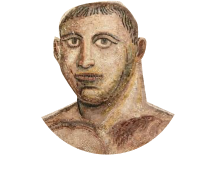

Vatican City is the smallest state in the world with a mysterious past and a huge collection of masterpieces of world art. Let’s dive into It’s history and talk about myths and facts.

The beginning — antiquity (сan't be without Caligula)
In the 1st I century A.D., no one thought about the Holy See. On the territory of the modern Vatican were the villas and gardens of the noble families. Among them the most famous are the gardens of Agrippina the Elder, which after her death were inherited by her son emperor and tyrant Caligula.
Mysterious Vatican

In his free time, Caligula liked to watch race. That is why he built hippodromes on the territory of the gardens. Later, according to one version, St. Peter was crucified on these hippodromes. Then he was buried on Vatican Hill.

Antiquity (сan't be without Caligula)
Vatican City is the smallest state in the world with a mysterious past and a huge collection of masterpieces of world art.


In the IV century Constantine came to power. He permitted the practice of Christianity, and on the site of St. Peter’s burial he erected a basilica. Later the famous St. Paul’s Cathedral would be built here.
He moved the capital of the state to Byzantium, and organized the new state system. But it’s not about him now.
At the end of the V century, the Roman Empire disintegrates
Everything changed in 1870
After so many centuries, Italy is unified into a single state (a process beautifully called the "Risorgimento"). Victor Emmanuel II seizes Rome, and the then Pope Pius IX, having lost his power and influence, flees behind the walls of the Vatican. The "question of Rome" arises, which is not resolved for 60 years.
From 476 a period of feudal fragmentation begins. The rise of the papacy and of ecclesiastical power takes place.
By 756 an entire Papal Region had formed, with more than 3 million people at the best of times. The boundaries of the realm were difficult to draw: after all, the popes were constantly struggling to expand, annexing new lands. But it was not without losses either.
After so many centuries, Italy is unified into a single state. Victor Emmanuel II seizes Rome, and the then Pope Pius IX, having lost his power and influence, flees behind the walls of the Vatican. The "question of Rome" arises, which is not resolved for 60 years.
In 1929 Vatican officially became an independent state. This happened when Mussolini was in power, so that the Vatican undertook to support the regime in its turn.
The 30s and 40s remain the most enigmatic years of Vatican history. Most of the documents of those years have been destroyed or classified.
Lateran Treaty
As a result of the agreements, church representatives were exempted from military service. Church property — from taxes. Italy undertook to pay to the Holy See 750 million Italian lire and, at the same time, to allocate a five percent hard state loan of one billion Italian lire.
Officially, the state is not even 100 years old yet!


Today there are about 1,000 people living in Vatican
Everyone else is a tourist. They helped the Holy See to set another record. The Vatican has the highest crime rate: 1.5 crimes per inhabitant. Thieves from all over the world provide daily work for the only judge in the city.
There are about 50,000 pieces of art stored here.
There are almost no women in Vatican
Relax, ladies. It’s still possible to move here, here’s a tip:
One must marry a Swiss Guardsman. But remember: Guardsmen can marry only by special permission and having served to the rank of corporal, and the future wife herself must the approval of Vatican.
What if you just became the Pope?
In theory, any unmarried male Catholic could be elected pope. In practice, for the past few centuries, only cardinals with priestly rank have become popes.
Vatican preserves masterpieces by Botticelli, Michelangelo, Bernini, Raphael Santi, Leonardo da Vinci, Caravaggio and other artists.
В Ватикане проживает около 1000 человек

About the mysteries
The Vatican Library contains the richest collection of manuscripts from the Middle Ages and the Renaissance. The shelves are 85 kilometers long. A lot of the material is classified, and the curia selects researchers very carefully. Hence the dozens of conspiracy theories.
It is rumored that the library contains recipes for rejuvenation from Count Cagliostro and information about UFOs visiting the Earth. Yes that's it: probably all history of mankind fiction, and sources with real
data lie somewhere on shelves.
data lie somewhere on shelves.

Joanna’s story ended tragically. During a procession through the streets of Rome, she went into labor. An indignant crowd threw stones at the papessa. After this incident, it was decided to check the sex of the pope before his appointment. A special chair was made for this purpose.
Today the Vatican denies that a woman once held the papacy. But the chronicles are full of references to Pope John. According to legend, she served in the monastery and was the secretary of Pope Leo IV. And after Leo IV's death she became his successor.
And one more secret

In Vatican there are many attractions. For example, the shortest railroad line: its length is about 900 meters, of which only 300 pass through Vatican territory. It was used for the Pope’s trips to Rome. But recently the road was also opened for tourists.
It also has its own postal service. The Universal Postal Union even considers it one of the best in the world.

A must-see
at the Vatican
at the Vatican

St. Peter's Cathedral
Sistine Chapel
Apostolic Library
Apostolic Palace
Bramante's Staircase
Pio-Clementino Museum
Borgia Apartments

